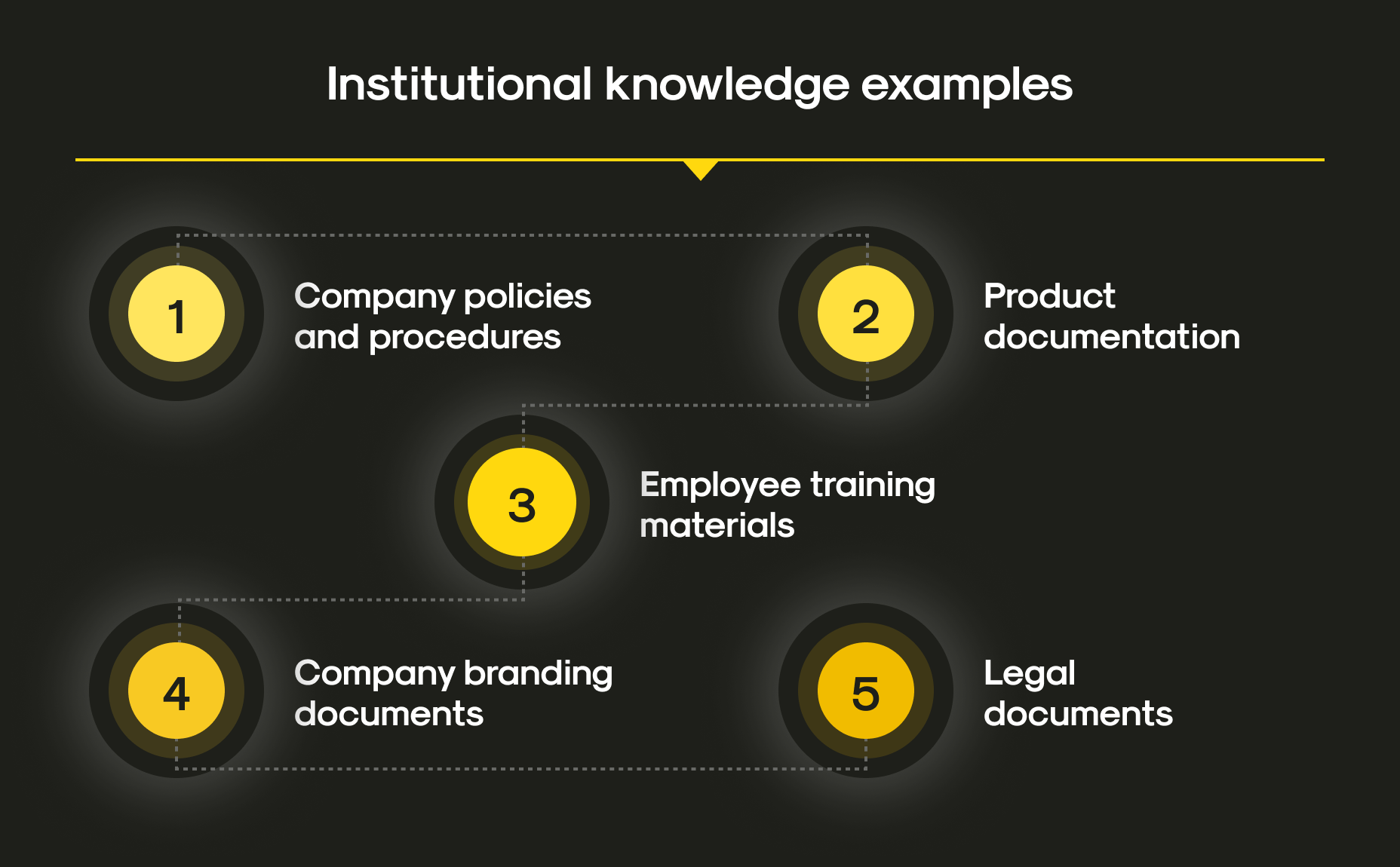Regardless of industry, every business depends on knowledge, be it strategic, technical, or procedural. But what happens when that knowledge resides in a departing employee’s head or is buried in an outdated document no one remembers exists? As teams grow, turnover accelerates, and digital complexity increases, institutional memory becomes a fragile asset.
The result is the memory fade effect, a slow erosion of vital context, insights, and know-how that silently undermines scale, productivity, and innovation. While the early signs may look like minor inefficiencies, the long-term damage compounds: misaligned teams, repeated mistakes, slower onboarding, and a culture stuck reinventing the wheel.
Fortunately, AI can offer more than just automation or data crunching. It can help preserve, structure, and resurface critical organizational knowledge, turning what was once ephemeral into a long-term asset. In this article, you’ll discover:
- What the memory fade effect is, and why it silently sabotages growth, continuity, and innovation
- How institutional knowledge works, and what makes it so hard to retain and scale
- Real-world scenarios where memory loss shows up, from repeated mistakes to broken onboarding
- Why traditional knowledge management systems fail in fast-moving and hybrid companies
- How AI-powered memory systems capture, organize, and resurface critical know-how
- The top risks to watch out for, including model drift, privacy issues, and employee trust gaps
- How Mitrix helps organizations future-proof their institutional memory with AI/ML and GenAI solutions
What is institutional knowledge?
Company’s knowledge includes all the unwritten know-how, decisions, lessons, and cultural norms that teams accumulate over time. Some of it is explicit, for instance, stored in documents, dashboards, or wikis. Much more is tacit: shared verbally, learned through experience, or locked inside individual workflows.

Institutional knowledge examples
Examples include:
- Why a legacy system was configured a certain way
- How a specific client relationship evolved
- Common pitfalls in a process that aren’t in the SOP
- Tribal shortcuts that save hours but aren’t documented
This knowledge gives teams an edge. It’s what allows them to act faster, make better decisions, and avoid past mistakes. But here’s the catch: it’s notoriously hard to scale and retain.
The memory fade effect in action
Even worse, memory fade rarely arrives with obvious warning signs. Instead, it sets in gradually and quietly over time. Here’s how it typically shows up:
- Team turnover leads to broken continuity. A senior engineer leaves, and suddenly no one understands the infrastructure choices made three years ago. Progress stalls as new hires retrace old steps.
- Onboarding takes longer. Without a shared knowledge base, new team members rely on piecemeal training and scattered documents. They shadow others endlessly instead of ramping up quickly.
- Decisions get duplicated or contradicted. A product team launches a feature that sales deprecated a year ago. Marketing repeats an A/B test the data team already ran.
- Culture fragments. As teams grow and spread across geographies, they begin developing parallel workflows and philosophies. Knowledge becomes siloed, not shared.
Over time, the damage accumulates. What starts as minor friction turns into a drag on execution. Scaling slows down not because of talent or funding, but because the organization keeps forgetting what it already knows.
Why traditional knowledge management falls short
In theory, knowledge management (KM) systems should solve this problem. In practice, they rarely do, and here’s why:
- They rely on manual updates. Employees are expected to document lessons learned, update wikis, and tag assets. But when deadlines loom, documentation always loses.
- They become outdated fast. Static knowledge repositories decay. A wiki page written, say, two years ago may no longer reflect how things are done today, but it still shows up in search.
- Search is shallow. Most KM systems don’t understand nuance. They surface pages with matching keywords, not context-relevant insights.
- They don’t capture tacit knowledge. Verbal knowledge shared in meetings, chats, or support calls often never makes it into the KM system at all.
In short, the existing approaches don’t scale with modern, fast-moving, hybrid organizations. What’s needed is a smarter layer: one that not only stores information but actively curates and delivers it when and where it matters.
AI as a memory layer for the organization
AI is well-positioned to address this gap. Not because it “knows” more than people, but because it excels at capturing patterns, retrieving relevant context, and adapting outputs to specific queries or scenarios.
Here’s how AI can function as an institutional memory layer:
1. Capturing knowledge automatically
AI-powered systems can monitor conversations (e.g., in Slack, Teams, or meetings), extract key insights, and organize them without manual tagging. This turns informal, hard-to-capture interactions into usable artifacts.
2. Semantic search with context awareness
Instead of relying on keyword matching, AI can understand intent. Ask, “Why did we switch from tool A to B in 2023?” and receive the actual rationale extracted from decision logs, emails, or meeting transcripts.
3. Memory-augmented assistants
AI copilots can be trained on company-specific data, surfacing prior decisions, policies, or project history during real-time workflows. For example, while configuring a system, the assistant may remind you of legacy constraints tied to compliance.
4. Onboarding acceleration
By tailoring information to a user’s role and goals, AI can guide new employees through workflows, policies, and tribal knowledge faster than static handbooks. Think: “Explain our sales qualification process in the EU region” (not to mention with links to relevant call recordings and playbooks).
5. Dynamic documentation
Rather than relying on people to update docs, AI can auto-generate summaries after meetings, extract changes from version history, and flag outdated material for review.
Key benefits of AI-powered organizational memory
- Preserves context, not just content. AI links knowledge to the moment it was created and why. It provides more than just what, but also when, how, and by whom.
- Reduces dependency on specific individuals. When institutional knowledge is captured and made accessible, teams can function effectively even amid churn.
- Accelerates decision-making. Access to past insights helps avoid duplication and fosters more consistent, data-driven choices.
- Boosts resilience and continuity. Projects don’t fall apart when a key stakeholder leaves or when remote teams need to collaborate asynchronously.
- Enables cultural consistency at scale. Shared memory creates alignment across geographies and departments, even as teams grow and evolve.
Common challenges to watch
As of 2025, even the most advanced memory systems aren’t a silver bullet. While AI excels at capturing, organizing, and surfacing institutional knowledge, integrating these tools into everyday workflows isn’t without friction. Here are the common hurdles organizations face, and how to leap over them without tripping on your data trail:
Privacy and access control. Not all knowledge is meant for all eyes. AI systems must respect data sensitivity, enforcing granular permissions to prevent leaks or breaches. HR shouldn’t see dev logs, and junior interns probably don’t need access to board-level strategy docs. Designing clear access protocols (and baking them into your AI pipelines) prevents knowledge sharing from turning into knowledge oversharing.
Model drift. AI learns. However, over time, models may start surfacing outdated or irrelevant insights unless actively monitored. This is especially risky in fast-moving industries. Regular retraining, feedback loops, and drift detection tools help keep your AI from becoming a well-meaning, clueless librarian handing out dusty manuals.
Employee trust and adoption. Let’s face it: some people get nervous when software starts telling them how to do their job better. AI-based memory systems must earn trust. That means explaining how recommendations are generated, showing traceability in sources, and providing override options.
Information overload 2.0. If poorly designed, AI can worsen the very problem it was brought in to solve. A tool that surfaces too much, too often, or too vaguely turns into white noise. The antidote? Smart filters, contextual recommendations, and a strong focus on relevance over recall. Remember: just because you can retrieve every meeting note since 2018 doesn’t mean you should.
Balancing automation and human insight. AI excels at remembering. People excel at interpreting. The real magic happens when both work together. This way, businesses that thrive with AI-powered memory systems are the ones that keep humans in the loop.
Integration fatigue. One last curveball: introducing another tool into an already cluttered stack can backfire. If your AI memory system doesn’t play nicely with Slack, Jira, Notion, or wherever your team lives, it risks becoming the digital equivalent of a forgotten filing cabinet. Seamless integration and smart embedding into daily workflows are key.
How Mitrix can help
At Mitrix, we offer AI/ML and generative AI development services to help businesses move faster, work smarter, and deliver more value. We help businesses go beyond proof-of-concept AI. We focus on building AI solutions that aren’t just viable, they’re valuable, trusted, and adopted.
Our team delivers AI solutions that don’t just automate workflows but preserve intelligence. Our approach includes:
- AI copilots fine-tuned to your org’s history and internal knowledge
- Contextual knowledge graphs to structure institutional memory
- NLP-powered search that surfaces insights based on meaning, not keywords
- Feedback-aware systems that improve with use over time
Whether you’re a scale-up struggling with onboarding or an enterprise worried about succession planning, our team helps you build the kind of AI memory infrastructure that future-proofs your business.
Wrapping up
In 2025, scaling a company means scaling more than just people and tools. In fact, it means scaling memory. The lessons, logic, and learnings that helped your team succeed once shouldn’t vanish with every promotion, departure, or pivot.
Institutional memory is a competitive advantage. AI helps you retain it, evolve it, and apply it exactly when it’s needed. Because the greatest risk to growth isn’t what your company doesn’t know: it’s what it used to know and forget.


